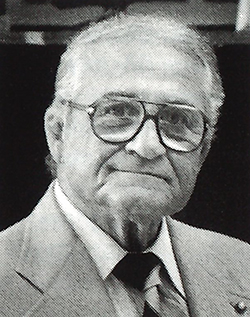John Bonica devoted his life to easing people’s pain
 John J. Bonica, the UW anesthesiology professor considered by many to be the founding father of the field of pain relief, died Aug. 15, 1994, after suffering a stroke. He was 77.
John J. Bonica, the UW anesthesiology professor considered by many to be the founding father of the field of pain relief, died Aug. 15, 1994, after suffering a stroke. He was 77.
Bonica, who devoted nearly all his waking hours to eliminating suffering from pain, helped pioneer the awareness, study and relief of pain with his landmark book, The Management of Pain, published in 1953.
Inspired to help wounded soldiers during World War II, he pioneered the use of regional “blocks” when he was chief of anesthesiology at Madigan Army Hospital in Fort Lewis in the 1940s. His techniques helped more than 10,000 soldiers under his care who had been wounded in action. His mission became even more personal when his wife, Emma, nearly died from primitive, open-drop ether anesthesia during the birth of their first child. From that day forward, he committed himself to developing regional anesthesia for obstetric pain. For the birth of their second daughter, Emma was the first woman in the Pacific Northwest to receive the now-routinely administered continuous epidural analgesia.
Bonica was born on the island of Filicudio, Messina, Italy, on Feb. 16, 1917. He came to New York City when his family emigrated in 1928. Following his father’s death in 1932, he assumed responsibility for the household, shining shoes, hawking newspapers, and selling fruits and vegetables in pursuit of his dream to become a physician. He won city and state high school wrestling championships and eventually became world light heavyweight wrestling champion. His wrestling injuries prompted him to devote his life to rid others of pain through anesthesia, says his sister, Elizabeth Rando of Tacoma.
He worked his way through college at Long Island University and medical school in Milwaukee as a professional wrestler, traveling with the carnival during the summers. He came to the Pacific Northwest in 1944 to work at Madigan Hospital and he was head of anesthesiology at Tacoma General from 1949 to 1960. While he was chair of the UW anesthesiology department from 1960 to 1978, the department became one of the most prominent in the world, developing advanced techniques for surgery and obstetrics. He also established the world’s first Multidisciplinary Pain Clinic, a model emulated worldwide.